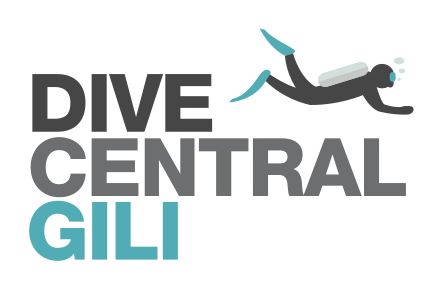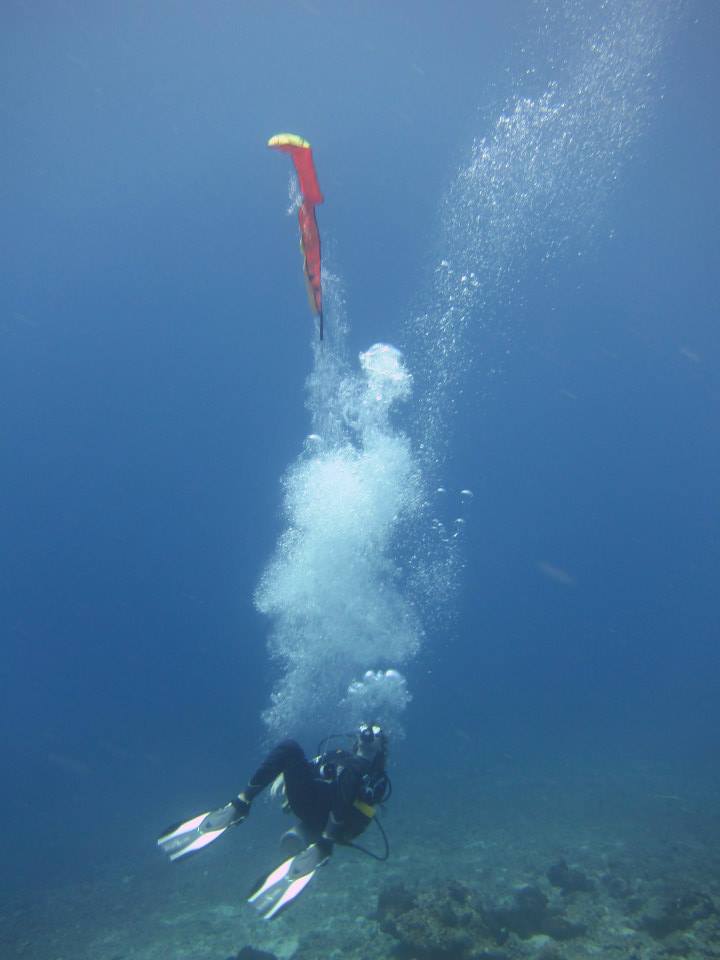Don't forget your SMB!
What are they and how do they work?
the crew spotted these divers due to their big, bright safety sausage!
I will never dive without an DSMB, or surface marker buoy. They can be annoying sometimes, and it is an extra thing to carry, however, it's sod's law that the one dive you don't take it with you is the one dive where you're going to need it!
Better know as a safety sausage, this small but important piece of kit is something that you may need to use early on in your dive career, so it is important that you know how to use it.
Deploying a DSMB underwater takes a certain amount of skill and one that you should master before you need to use it! Practicing in a swimming pool beforehand can be helpful and can show you what works and what doesn't when adding air to the marker. You need to ensure that you concentrate on your buoyancy as this may be affected when you start to concentrate on your DSMB. Adding air is easy, using your alternate, stuff the mouth piece inside the opening at the bottom and fire air into the sausage. Hold onto it for as long as you can (and for as long as is safe!) and then let go ensuring you are not tangled or snagged in the line. You don't need too much air as what you put in will expand on the way up. Ask your buddies for tips and hints with what to buy, your instructor is also a wealth of knowledge as they have probably used a few different types and makes during their teaching career. Practice deploying as much as you can with the assistance of a dive buddy, you'll have it down to a fine art in no time!
practice before the dive to ensure you have the deployment down to a fin art. concentrate on adding enough air and also on your buoyancy!
“SMB or DSMB?
An SMB, or surface marker buoy, is designed to be inflated at the surface after a dive. They are the signalling device used so that your boat crew can see you and come and pick you up after your underwater activities.
A DSMB, delayed surface marker buoy, is designed to be deployed from underwater as you are coming up to a safety stop, especially when doing a drift dive or in an area where there is a lot of boat traffic, so that the boat crew know your whereabouts.
My choice is a DSMB every time!”
Deploying a marker at the surface is a tad easier. Just blow it up with your alternate and make sure it is full enough that it sticks up out of the water for boats to see. This still may take some practice as the surface conditions may be choppy and could make it difficult for you if it is your first time with your SMB.
“REMEMBER:
Look up before deploying your DSMB. You don’t want an unexpecting diver to take a whack from your safety sausage!”
What to buy
two color smb is a great choice for many different diving conditions
My suggestion is that you purchase a marker with a dump valve, these are easy to deflate and repack when needed. Also, a self-sealing marker is handy as they stay inflated until to say otherwise, allowing boats from a long way off to see your destination right until they get to you.
The marker should also be large enough and bright enough for it to be spotted out at sea. I prefer orange/red as this color can be seen in sunny destinations, over the yellow ones that are usually good in cloudier/ grayer places (for example England!)
Your SMB will benefit from having a self seal, so that when you put air in, it stays there. Also, make sure it has a dump valve too.
You can buy SMBs that are orange on one side and red on the other. It is also a good idea to how the boat crew what you have so that they know it is you when you surface after your dive. Personalizing you own is also a good idea, both you and the crew know that it is yours!
“Tip: Once you have shown the crew what your SMB looks like, make sure you be friendly to them at all times! (which obviously, you should anyway) If they do not like you, you will be the last diver to get collected; the last diver in the loo and the last diver to get a cup of coffee. Not ideal :)”
Also, it is a good idea to always have a pocket SMB stuffed in your BCD. These are handy if you experience problems with your DSMB and can be used as a last resort once on the source. They are cheap and pack away easily and are a life saver in a tricky situation.
For the reel, it depends where you are planning on diving most often. I prefer a reel with a trigger release that you have to hold down to release the line and it locks in when you have let out enough. These are quite cumbersome however so you may prefer a finger reel, ideal for fair weather diving, on holidays for example.
My guide has an SMB, why should I bother?
pull on your smb to make it stand up, a loud and clear signal for your boat crew
Ok, but what if your dive does not go to plan? What if you have to come up earlier than expected? What if you get separated form your group and you are left to ascend alone? What if the current is not as expected and yo drift further than you thought you would? What if the conditions are rough and the guide loses their SMB?
For many reasons, you should have your own SMB/DSMB/ pocket SMB and reel. Be independent and self-sufficient. This way you know that you are going to make a safe ascent no matter what, even if the unexpected occurs.
“I went on a dive with my then instructor, just a fun dive, off the South coast of England. The conditions here are notoriously bad, however I have had good dives there too! This particular day, the weather was typical English (grey and drizzly) so when we dropped in I was pleased to see that the visibility was around 3m (If you have dived in England, you will also appreciate that this is both pleasing and unusual, and surprisingly good for this part of the country!)
The dive was good, a nice bimble around a WWII wreck. As we were coming to the end, my buddy decided to swim out slightly to check out a huuuge lobster. Unbekown to us, just off of the wreck the current was a lot stronger. My buddy got cramp fighting the current and could not make his way back to me, due to the lack of visibility, I lost him quickly.
Low on air and worried I’d get swept out too, I stayed put and waited, knowing that he had more chance of finding me than me finding him.
After a minute (the golden rule: search for a minute and then slowly ascend) I began to ascend by myself, knowing that I had my own SMB attached to my BCD. My only worry was that my buddy did not have one. Being an instructor and teaching all the time, he didn’t want the added accessory hanging form his BCD. Understandable, but a bad choice! He had relied on me using mine at the end of the dive, not thinking that we would get split up.
This time we were lucky and on surfacing, my buddy was not too far from me and was able to see me by my SMB. He was able to swim to me so that the boat could see us both to pick us up.
After this, I will never dive without my beloved DSMB!”
Don't get caught out, always take some form of surface marker with you on every dive! One day you will be so happy that you did!




